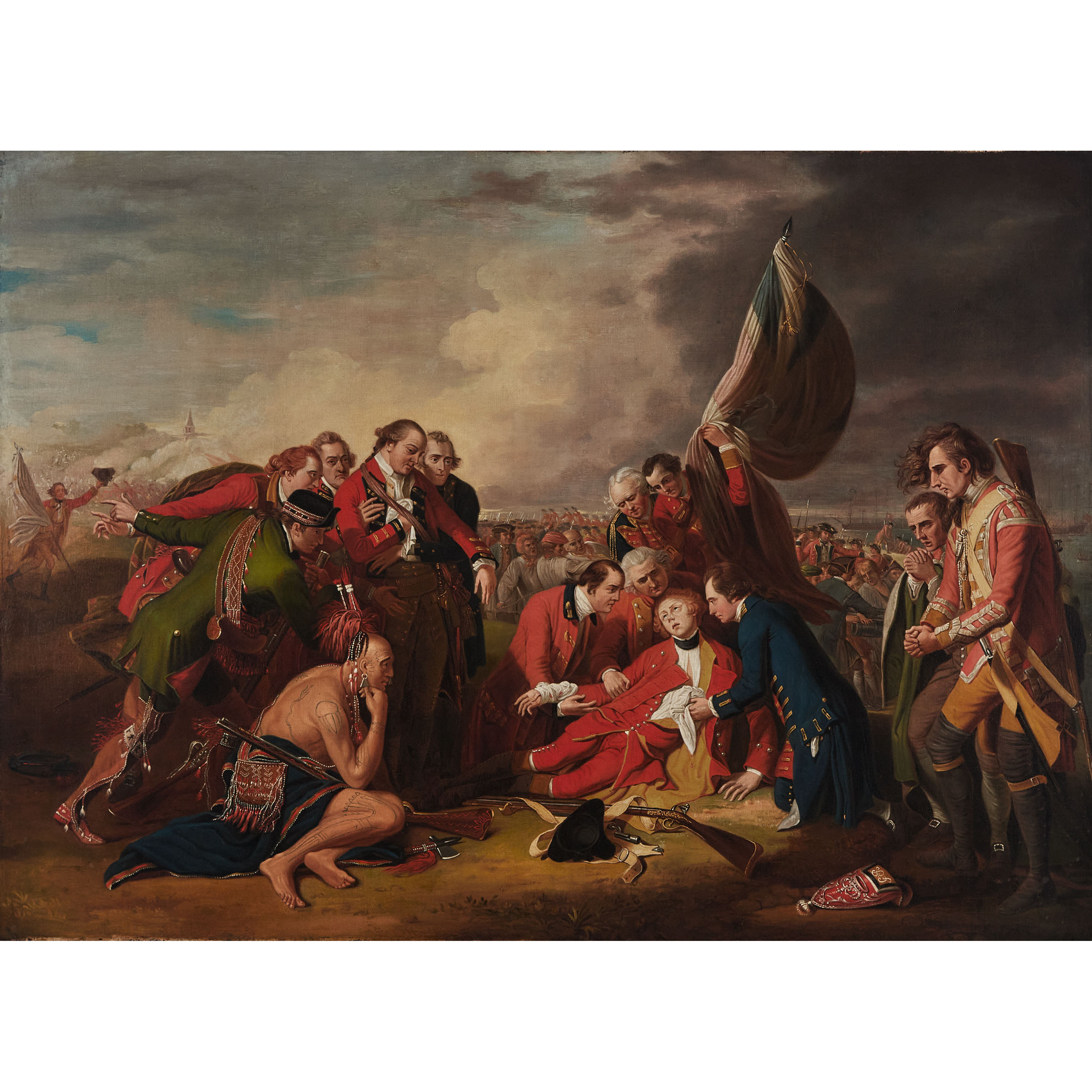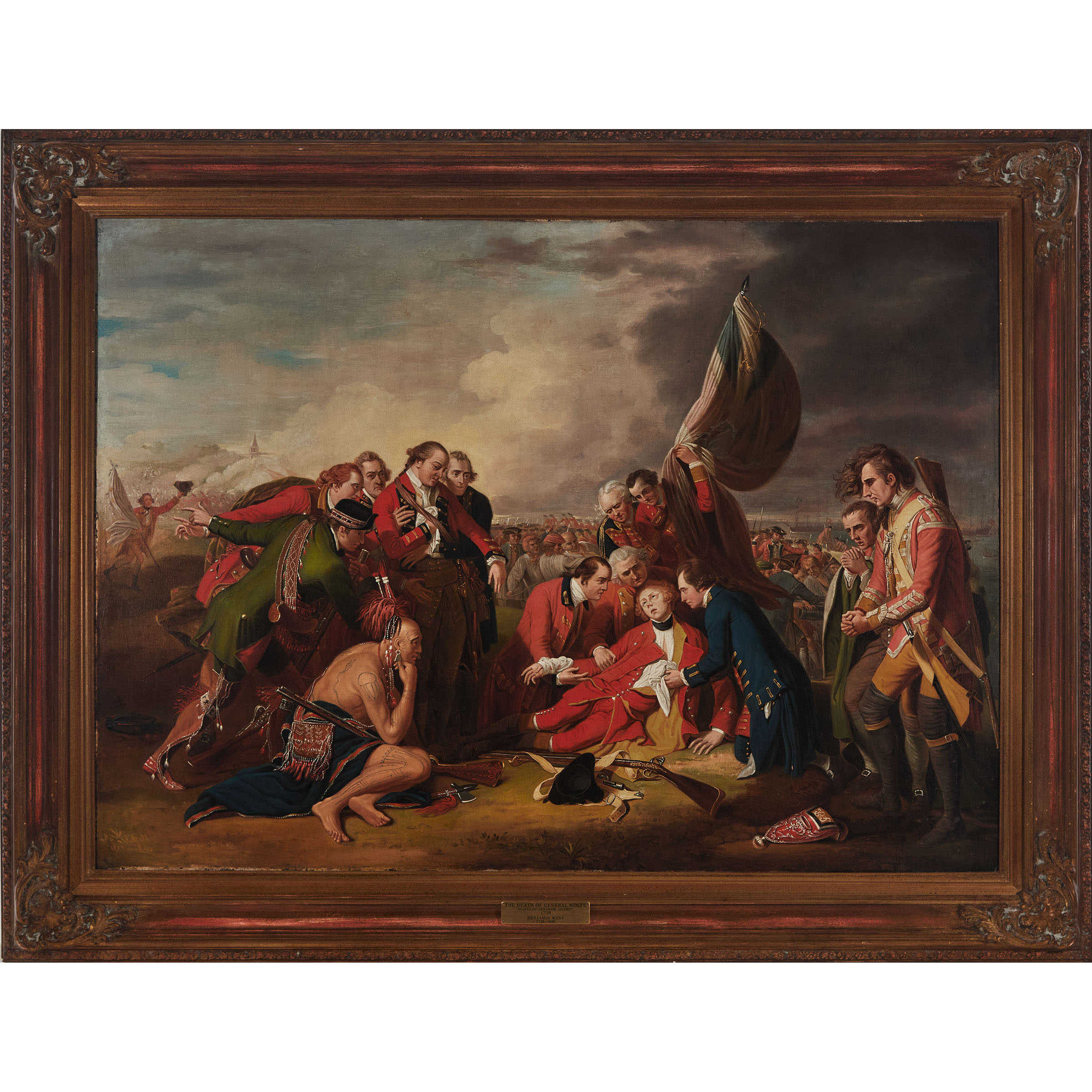Lot 63
Unidentified Artist, after Benjamin West (1738-1820), American

Additional Images

Provenance:
The Pagurian Collection, Toronto, ON;
Collection of Sir Christopher and Lady Ondaatje
Note:
West set out to build an epic history painting, one which would speak to national identity and power. He was not the first to tackle this particular subject matter, but his remains the definitive version, even though it was painted eleven years after the battle itself. Perhaps the secret to this version’s success lay in West’s presentation of Wolfe’s death as the climax of a great narrative. West incorporated the most dramatic details from the battle, details that the viewing public would have known about via the news: the decisive moment the French forces were rebuffed, the conquered St. Lawrence River, the messenger bringing news of victory to the dying general who in turn whispers his thanks to God for the triumph. In doing so, West was able to create, in the words of Simon Schama, “a secular Passion scene, a Lamentation, an icon of the British Empire.” (3) It is as close as you could get to a blockbuster in an age before cinema, which helps to explain the incredible popularity and subsequent proliferation of West’s image.
What the work effectively portrayed was the event which turned the tide of a great war, secured Britain’s colonial holdings, and marked the high-water point of British power in North America before the American Revolution. The British victory Battle of Quebec was viewed as a miraculous and unexpected victory, as the odds were in favour of the well-trained French army, with their superior numbers and secure position within a seemingly impregnable fortress. Historian Dennis Montagna writes that “with his intricately composed narrative, West effectively expressed the growing nationalist orientation of his countrymen. In the decade between Wolfe's death and West's creation of the epic history painting commemorating it, Britons enthusiastically embraced Wolfe's memory and cast him as a national martyr. At the same time, they viewed the battle that had taken Wolfe's life as decisive in elevating British self-esteem and as a focus for anti-French sentiment.” (4)
For West and his audience, Wolfe’s death was aspirational—a specifically British martyrdom. Viewing the painting convinced audiences that they were part of a heroic tradition, one that felt more immediate than biblical or Greco-Roman epics. In depicting his heroes in contemporary dress, West allowed viewers to feel part of the scene, to recognize themselves and their specific moment in time. In his rejection of academic conventions, West “helped to foster an art that would dramatically teach the same patriotic lessons to a British public as the ancients had derived from their own heroic events." (5) For viewers around the world, this was an image they wanted to see, to own and to display, an image which represented both the glory of the British Empire as well as heroic self-sacrifice. The image was reproduced widely, as is evidenced in the examples in this auction—lots 63 and 65.
(1) Simon Schama, “‘Wolfe Must Not Die like a Common Soldier,’” The New York Times, May 12, 1991, https://www.nytimes.com/1991/05/12/arts/art-wolfe-must-not-die-like-a-common-soldier.html.
(2) Dennis Montagna. “Benjamin West’s The Death of General Wolfe: A Nationalist Narrative.” American Art Journal 13, no. 2 (1981): 72–88. https://doi.org/10.2307/1594250, 80.
(3) Montagna, 84




